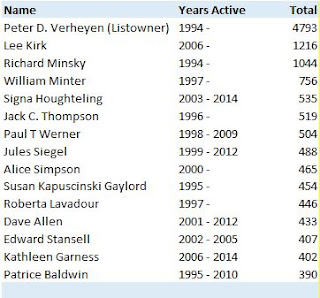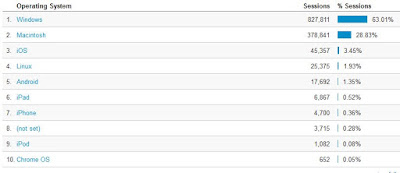Reviewed by Barbara Adams Hebard
In the age of electronic devices, on-line exhibitions have frequently become the chosen venue for displays of bookbindings. While I completely understand the usefulness of this mode – wider audience, less cost, global curators and exhibitors, possibility of showing large numbers and multiple views of books, running the exhibit for an extended period of time, and so forth – I still appreciate seeing images of books in print form. The Society of Bookbinders International Bookbinding Competition 2015 catalogue, printed to accompany a physical exhibit of the same title which ran from August 20-23, 2015, is a lasting legacy of that show held at Keele University. The award-winning books could later be seen through November 5, 2015 at George Bayntun, Fine Bindings and Rare Books, Bath, and then, in a final venue, at Shepherds, London, November 14, 2015 through January 8, 2016. If you missed the show in August and will not be travelling to London in the near future, all is not lost; this catalogue beautifully captured the eighty-five bookbindings in the exhibit. [Publisher's note: The online version of the catalog linked to above only shows the competition's award winners]
Since I am a bookbinder, I immediately began my investigation of the catalogue by poring over the pages containing the book images. Right off, I was delighted to find that prize-winning entries in all five entrance categories were shown with good-sized whole book images and a second, closer view of a detail of the book. At least one book in each of the entrance categories was given two images as well. The fact that there were five categories is marvelous, including fine binding, complete book, case binding, restoration, and historical binding. The judges must have had a challenging time choosing the prize-winning entries; the catalogue is filled with fantastic bindings. I have to say, though, that Andrew Sims’s sumptuous Harleian-style binding in Morocco covering the Book of Common Prayer stands out as a masterful example of hand-tooling, and so expertly resembles 18th century style that it is not surprising as the selection for the Fine Cut International Award for Finishing. This is the sort of binding that inspires the admiration of fellow bookbinders as well as book collectors.
 |
| The Book of Common Prayer by Andrew Sims |
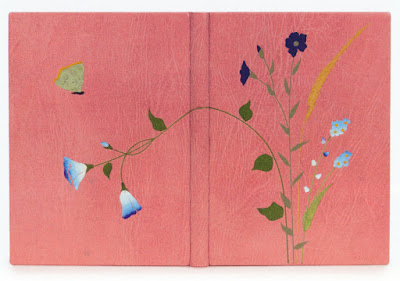 |
| Visite au Petit Matin by Ingela Dierick |
Sims’s binding featured a number of floral decorative motifs; several other books also had floral themes, albeit very different in style. Ingela Dierick created a lovely, delicate bouquet of onlaid leather flowers in a design that charmingly sweeps from the front board to the back, suggestive of a guest handing flowers to a hostess, as in the theme of the book, Visite au Petit Matin. Abigail Bainbridge’s journal, Herbarium, covered in a vellum binding entrapping pressed flowers and foliage, dramatically evokes lavishly illuminated 15th century manuscript leaves or early embroidered bindings.
 |
| Herbarium by Abigail Bainbridge |
 |
| Pan by Peter D. Verheyen |
Bainbridge was not the only one who imaginatively used vellum to convey a theme in deceptively simple-appearing binding style. Peter Verheyen, whom I have long considered a master of subtle, elegant bindings, has achieved this with the natural-toned vellum covering Eight Wood Engravings on a Theme of Pan. The variation of color on the surface of the vellum reveals the markings of the fur originally attached to that skin, quickly reminding an observer that Pan, the subject of the engravings, has the hindquarters, legs, and horns of a goat. Additionally, the use of snakeskin with a pattern boldly resembling vertebrae on the spine of the binding, and the placement of the sewing supports, make this a pleasingly proportioned design. Karen Hanmer, too, exploits the character of vellum in a limp binding used to encase The Anatomical Exercises of Doctor William Harvey: Concerning the Motion of the Heart and Blood. While she used only four illustrations from the text to embellish the cover (arms with accentuated veins), the prominent veining on the vellum surface completes the message.
 |
| The Anatomical Exercises of Doctor William Harvey by Karen Hanmer |
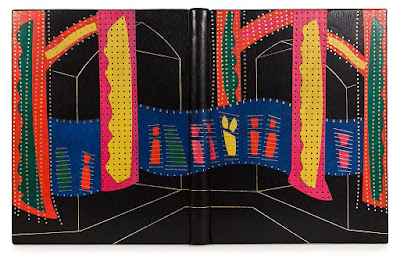 |
| A Midsommer Nights Dreame by Dominic Riley |
In bright contrast to the vellum bindings, books in variegated hues are represented in this catalogue as well. Using black goatskin with multicolor onlays and gold tooling for the cover of A Midsommer Nights Dreame, Dominic Riley skillfully put together a bookbinding which is both eye-catching and displays admirable control of technique. The gold-tooled lines forming the shape of the palace arches introduce depth to the flat plane of the boards, causing the bright colors of the trees and banner to appear to hover dreamily over the surface. Erin Fletcher, the only North Bennet Street School Bookbinding Program graduate whose work was in the exhibit, did her school proud with a nicely executed binding for The Nightingale and the Rose. An inlaid scarlet goatskin line visually pierces the book’s spine, and the embroidered feathers of the bird onlaid to the upper board add dimension to the cover. You can read about it being bound here.
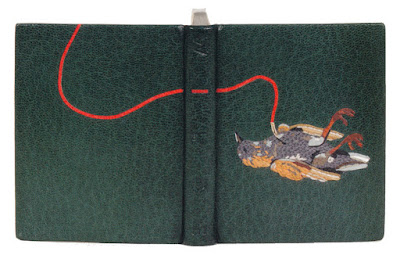 |
| The Nightingale and the Rose by Erin Fletcher |
One could go on describing other excellent books, but the truth is, bookbinders need to see the catalogue for themselves. The bookbindings, made using multiple techniques and materials, signal that this is not a dying craft and that binders are still experimenting/experiencing new ways to use their skills and design arts to create unique books.
Once I had savored the books, I returned to the beginning of the catalogue to discover that, in addition to the beautiful images of books, there are other enjoyable features to this catalogue. The warm-hearted tone of the introduction draws the reader in, and the brief history of the society will be useful to those who are not bookbinders. Listing sponsors up front is a good move and having the entrance categories spelled out is very helpful. The images of the tools of the trade tucked in the gutters and margins of the introductory pages nicely balance out the text. I had a couple of minor quibbles: the Contents page repeats the case binding category and the names of the bookbinders in that category, which is confusing; and the countries of origin of the binders are printed in faint grey tone—since it was an international exhibit, I thought that should be emphasized more.
The Society of Bookbinders has produced a great catalogue to accompany their 2015 international bookbinding competition. It will remain a record of that show and those who enjoy bookbindings or books about bookbinding should consider adding this volume to their collection.
Barbara Adams Hebard was trained in bookbinding at the North Bennet Street School. She was Book Conservator at the Boston Athenaeum for 18 ½ years and became the Conservator of the John J. Burns Library at Boston College in 2009. Ms. Hebard writes book related articles and book reviews, gives talks and presentations, exhibits her bookbindings nationally and internationally, and teaches book history classes. She is a Fellow of IIC, a Professional Associate of AIC, and an Overseer of the North Bennet Street School.









